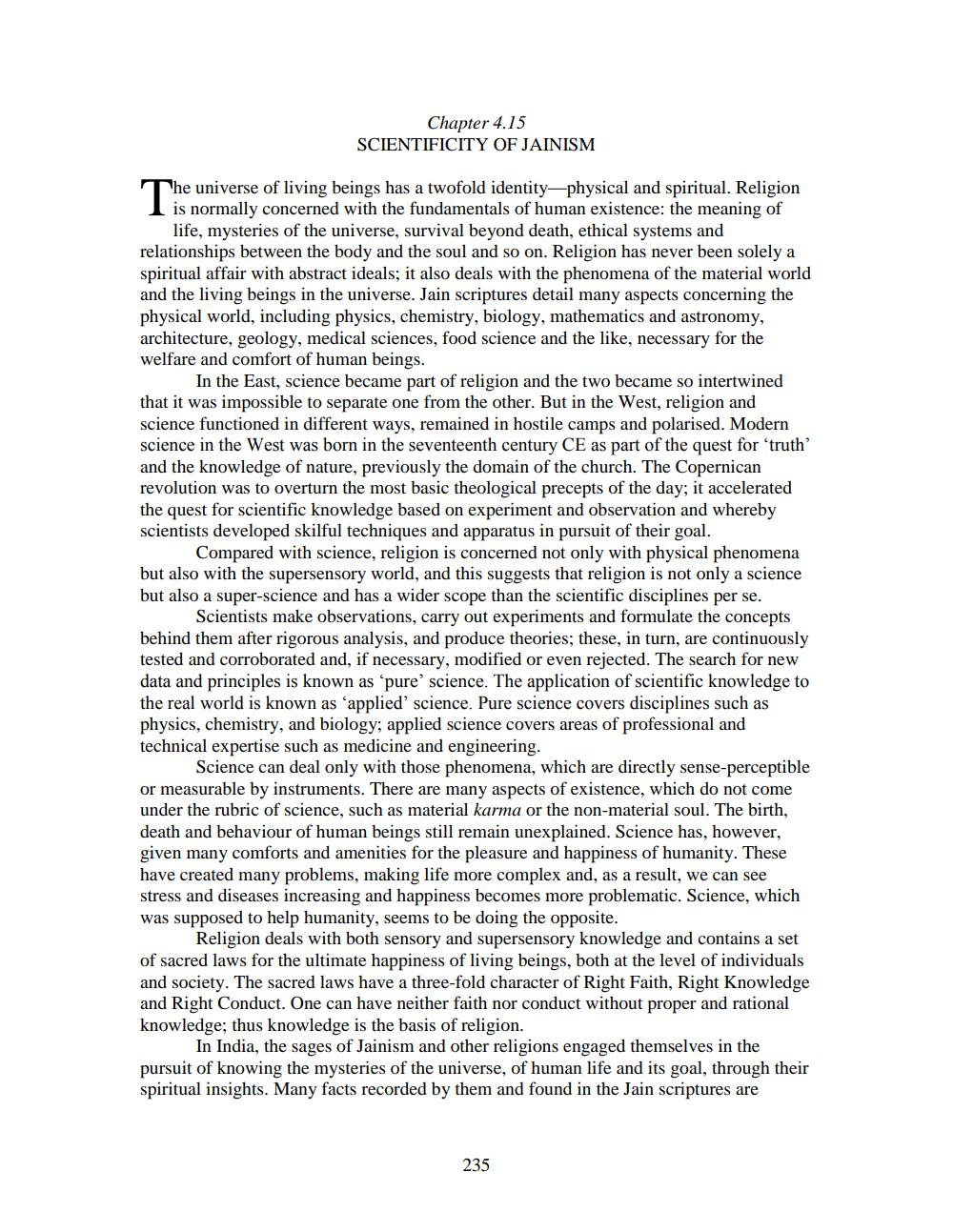________________
Chapter 4.15 SCIENTIFICITY OF JAINISM
The universe of living beings has a twofold identity—physical and spiritual. Religion I is normally concerned with the fundamentals of human existence: the meaning of
life, mysteries of the universe, survival beyond death, ethical systems and relationships between the body and the soul and so on. Religion has never been solely a spiritual affair with abstract ideals; it also deals with the phenomena of the material world and the living beings in the universe. Jain scriptures detail many aspects concerning the physical world, including physics, chemistry, biology, mathematics and astronomy, architecture, geology, medical sciences, food science and the like, necessary for the welfare and comfort of human beings.
In the East, science became part of religion and the two became so intertwined that it was impossible to separate one from the other. But in the West, religion and science functioned in different ways, remained in hostile camps and polarised. Modern science in the West was born in the seventeenth century CE as part of the quest for 'truth' and the knowledge of nature, previously the domain of the church. The Copernican revolution was to overturn the most basic theological precepts of the day; it accelerated the quest for scientific knowledge based on experiment and observation and whereby scientists developed skilful techniques and apparatus in pursuit of their goal.
Compared with science, religion is concerned not only with physical phenomena but also with the supersensory world, and this suggests that religion is not only a science but also a super-science and has a wider scope than the scientific disciplines per se.
Scientists make observations, carry out experiments and formulate the concepts behind them after rigorous analysis, and produce theories; these, in turn, are continuously tested and corroborated and, if necessary, modified or even rejected. The search for new data and principles is known as 'pure' science. The application of scientific knowledge to the real world is known as 'applied science. Pure science covers disciplines such as physics, chemistry, and biology, applied science covers areas of professional and technical expertise such as medicine and engineering.
Science can deal only with those phenomena, which are directly sense-perceptible or measurable by instruments. There are many aspects of existence, which do not come under the rubric of science, such as material karma or the non-material soul. The birth, death and behaviour of human beings still remain unexplained. Science has, however, given many comforts and amenities for the pleasure and happiness of humanity. These have created many problems, making life more complex and, as a result, we can see stress and diseases increasing and happiness becomes more problematic. Science, which was supposed to help humanity, seems to be doing the opposite.
Religion deals with both sensory and supersensory knowledge and contains a set of sacred laws for the ultimate happiness of living beings, both at the level of individuals and society. The sacred laws have a three-fold character of Right Faith, Right Knowledge and Right Conduct. One can have neither faith nor conduct without proper and rational knowledge; thus knowledge is the basis of religion.
In India, the sages of Jainism and other religions engaged themselves in the pursuit of knowing the mysteries of the universe, of human life and its goal, through their spiritual insights. Many facts recorded by them and found in the Jain scriptures are
235




